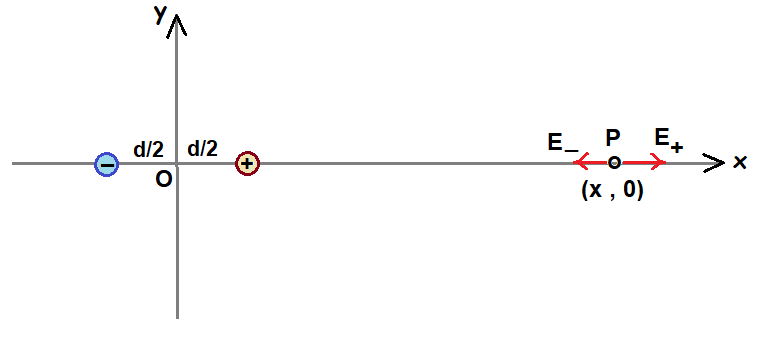CBSE Class 12-science Answered
Derivation of electric field on axial and equatorial of electric dipole
Asked by sonunahid64 | 08 Apr, 2021, 07:27: AM

Electric field due to dipole in axial direction is determined using using above figure.
Electric field at a point P(x,0) is given as

Where K = 1 / (4πεo ) is Coulomb's constant and p = ( q × 2d ) is dipole moment

Electric field of dipole in equtorial direction is determined using above figure
Electric field E+ due to positive charge is given as

Electric field E- due to negative charge is given as

Since magnitudue of above fields are same , resultant field E is given as

Answered by Thiyagarajan K | 08 Apr, 2021, 12:00: PM

